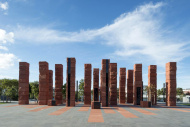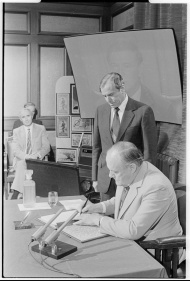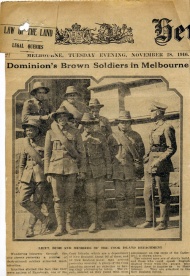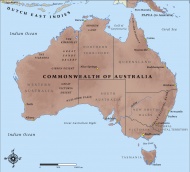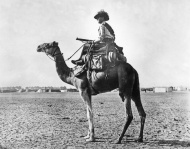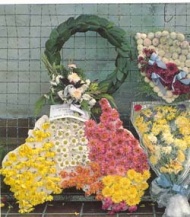Events In History
-
 28 March 1983Signing of CER agreement strengthens trans-Tasman trade ties
28 March 1983Signing of CER agreement strengthens trans-Tasman trade tiesNew Zealand and Australia formally signed the Closer Economic Relations (CER) agreement, strengthening trade ties between the Tasman neighbours. Read more...
-
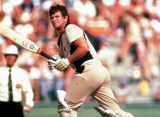 13 February 1983Lance Cairns hits six sixes at Melbourne Cricket Ground
13 February 1983Lance Cairns hits six sixes at Melbourne Cricket GroundAt 44 for 6 in reply to Australia’s 302, New Zealand was heading for an embarrassing defeat in the second final of the Benson & Hedges World Series Cup when Lance Cairns took guard with his bat, ‘Excalibur’. Read more...
-
 21 January 1944New Zealand and Australia sign the Canberra Pact
21 January 1944New Zealand and Australia sign the Canberra PactThe Canberra Pact was an undertaking by the two countries to co-operate on international matters, especially in the Pacific. Read more...
-
 5 April 1932Death of Phar Lap
5 April 1932Death of Phar LapThe champion racehorse Phar Lap was New Zealand-born and bred, but never raced in this country. He won 37 of his 51 races and 32 of his last 35, including the 1930 Melbourne Cup. In the gloom of the great Depression, Phar Lap’s exploits thrilled two countries. Read more...
-
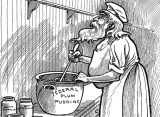 30 May 1901New Zealand turns down federation with Australia
30 May 1901New Zealand turns down federation with AustraliaA 10-man Royal Commission reported unanimously that New Zealand should not become a state of the new Commonwealth of Australia. Read more...
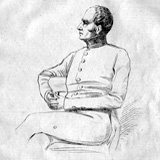
George Gipps was governor of New South Wales at a time when New Zealand land was included in the boundaries of New South Wales.
Read more...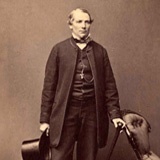
George W. Rusden, an Australian author, wrote histories of Australia and New Zealand that were highly critical of the Crown's policies towards indigineous peoples.
Read more...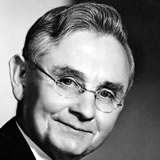
Michael Joseph Savage, New Zealand’s first Labour PM, was probably also it's best-loved. His avuncular image hung in the homes of the Labour faithful for decades.
Read more...Articles
Sealers and whalers
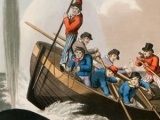
A European population explosion first impacted on New Zealand in the closing decade of the 18th century when sealers and whalers began to arrive in their hundreds seeking to exploit local resources.
- Page 1 - Sealers and whalersA European population explosion first impacted on New Zealand in the closing decade of the 18th century when sealers and whalers began to arrive in their hundreds seeking to
Anzac Day
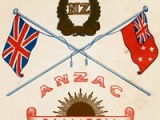
First observed in 1916, Anzac Day - 25 April - commemorates those killed in war and honours returned servicemen and women. The ceremonies held at war memorials around the country, and in places overseas where New Zealanders gather, are rich in tradition and ritual.
- Page 2 - The AnzacsThe word Anzac is part of the culture of New Zealanders and Australians. The word conjures up a shared heritage of two nations, but it also has a specific meaning, dating from
Governors and Governors-General

New Zealand has had 16 resident governors and 22 governors-general. Two early governors were called governor-in-chief.
- Page 3 - Career pathsAs the job evolved over time, so did the type of person needed to govern successfully. Between 1840 and 1853, when governors ruled personally, they were junior navy or army
British Empire
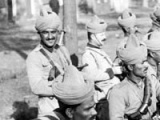
Key information and statistics about countries who fought as part of the British Empire during the First World War
- Page 3 - Commonwealth of AustraliaKey information and statistics about the Commonwealth of Australia during the First World
Go-betweens
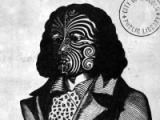
An important feature of early cross-cultural contact in New Zealand was the role of intermediaries (kaiwhakarite) who acted as go-betweens – people from one culture who lived within the other culture and helped bridge the gap between the two.
- Page 4 - The first woman settler?Charlotte Badger is believed to have been one of the first two European women to live (albeit briefly) in New
The New Zealand Legion
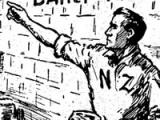
The year 1933 witnessed an unprecedented eruption of protest amongst urban businessmen and professionals in New Zealand. The most prominent manifestation of this protest was a radical conservative movement named the New Zealand Legion.
- Page 3 - The desire to 'do something'The New Zealand Legion was much more than a conservative protest against the coalition government. It was the focal point for a wide range of individuals, overwhelmingly from the
The 1960s
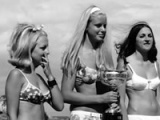
Five decades ago most Kiwis enjoyed a standard of living that was the envy of other nations. During the 1960s the arrival of TV and jet airliners shrank our world, and New Zealanders began to express themselves on a range of international issues, including opposition to the Vietnam War.
- Page 8 - 1965 - key eventsA selection of the key events in New Zealand history from
New Zealand cricket
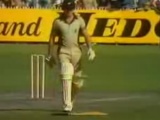
Relive some of the highs and lows in the history of New Zealand's most popular summer team sport, cricket. Although the game has been played here since the 1830s, international success – especially against traditional rivals England and Australia – was a long time coming.
- Page 5 - Playing AustraliaKey moments in New Zealand's cricketing rivalry with
Related keywords
- national war memorial
- wellington city
- memorials
- gallipoli campaign
- WW1
- anzac cove
- artillery
- indian army
- indians
- NZ Wars memorial
- new zealand wars
- ōhaeawai
- northern war
- WW1 stories
- war memorials
- oamaru
- otekaieke
- 1980s
- robert muldoon
- international trade
- economy
- CER
- governor
- governor-general
- british empire
- great depression
- new zealand legion
- robert begg
- cricket
- federation with australia
- richard seddon
- george gipps
- international relations
- cook islands
- rarotongan company
- george rusden
- historical writing
- WW2
- colonisation
- maps
- WW1 maps
- palestine campaign
- western front
- victoria cross
- camel corps
- rugby
- thames valley rugby
- anzac day
- wellington cenotaph
- pre-1840 contact
- ngapuhi
- charlotte badger
- intermediaries
- immigration
- goldfields
- cartoon
- horse racing
- phar lap
- vietnam war
- mount eden prison
- 1960s
- flags
- michael joseph savage
- prime ministers
- labour party
- bastion point
- trade unions
- sealers
- whaling
- anzac
- public holidays

